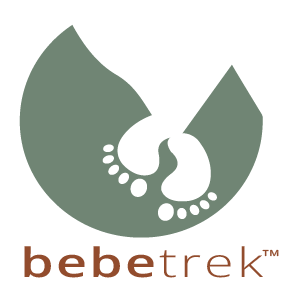Seven ways to to protect your baby from the sun while in a baby carrier
Baby wearing is a great way to enjoy the outdoors with your little one, but mums often wonder how to protect them from the sun. Especially in hot, summer weather.
Australia has among the highest levels of ultraviolet (UV) radiation in the world and can be strong enough to cause sunburn to an adult in as little as 10 minutes in summer. Imagine a baby with their ultra-sensitive skin.
Here are some top tips for baby sun protection while in a carrier.
Stay in the shade:
Where possible, stick to the shade. This could be trees, awnings or an umbrella. Be cautious if relying on shade from clouds though as UV radiation can still penetrate cloud cover. UV rays can also reflect off sand, water and concrete, meaning shade doesn’t always prevent sunburn.

Use UV protective sun covers:
Lightweight sun blankets rated UPF 50+ are a simple and convenient way of shielding exposed limbs from the sun while still providing airflow. UPF stands for Ultraviolet Protection Factor and measures the amount of UV radiation that penetrates through fabric. It is the textile equivalent of SPF for sunscreens.
Avoid using muslin swaddles as a sun cover, as muslin fabric isn’t sun protective. Muslin can have a UPF rating of less than 5 (a minimum of UPF 15 is required to be considered sun protective and experts recommend UPF 50), meaning skin damage is still possible while under muslin.
Bebe Trek’s range of UPF 50+ multifunctional magnetic sun covers block over 98% of the sun’s UV rays and feature in-built magnetic corners that easily secure around baby carrier straps so it won’t slip off.

Dress baby in UV protective clothing:
Full-body UV protective clothing is a simple way to protect baby’s skin from the sun while in a baby carrier. If it’s hot, choose lightweight, loose fit designs that allow airflow while still providing good coverage.
Consider the fabric and colour of the clothing too. A basic white-cotton t-shirt can have a UPF rating of just 5. The tighter the weave, the better the sun protection. Darker colours are also more sun protective than lighter shades, as they absorb more UV radiation. If in doubt, find clothing with a UPF 50+ rating.
Bebe Trek’s range of UV protective baby sunsuits are rated UPF 50+ and provide full-body coverage while still being lightweight and loose fitting. The extra long leg length means baby’s lower legs and feet remain protected in baby carriers and prams.

Slap on a hat:
Look for a wide brim or legionnaire style hat that also shades baby’s neck. Don’t forget to look for that UPF 50 rating too.

Use sunscreen:
For babies over six months, apply a broad spectrum SPF 50+ sunscreen to exposed skin and don’t forget to re-apply regularly. However, for babies under six months, the use of sunscreen is not recommended by the Australasian College of Dermatologists. Instead, use a combination of other sun protection methods described here.
Hoist an umbrella:
An umbrella can create excellent shade for you and your baby while outdoors, however it does take away a hand, and can be quite bulky when not required.
Check the UV index:
A simple method that requires no additional items or accessories, is to simply time your outing for early mornings and late afternoons when the UV index is low.
Sun protection is required whenever the UV index is 3 or higher, as that’s the level UV radiation can cause skin damage. In some parts of Australia, particularly in summer, this can be for the greater part of the day.
You can easily check the predicted and current UV index for your area using the free SunSmart UV index app.

Sources: Information for this blog was sourced from:
The Australasian College of Dermatologists
Australian Radiation Protection and Nuclear Safety Agency (ARPANSA)

